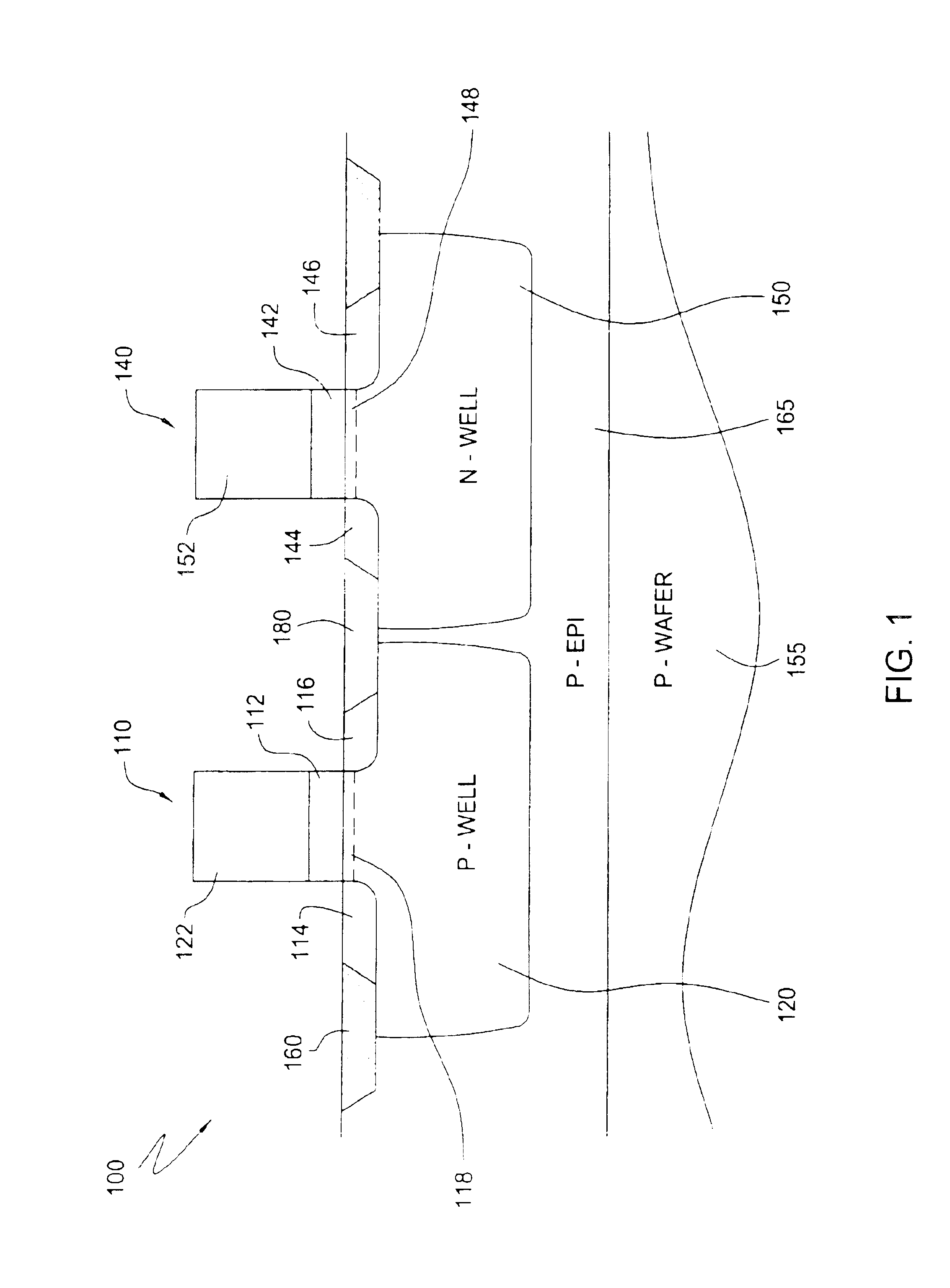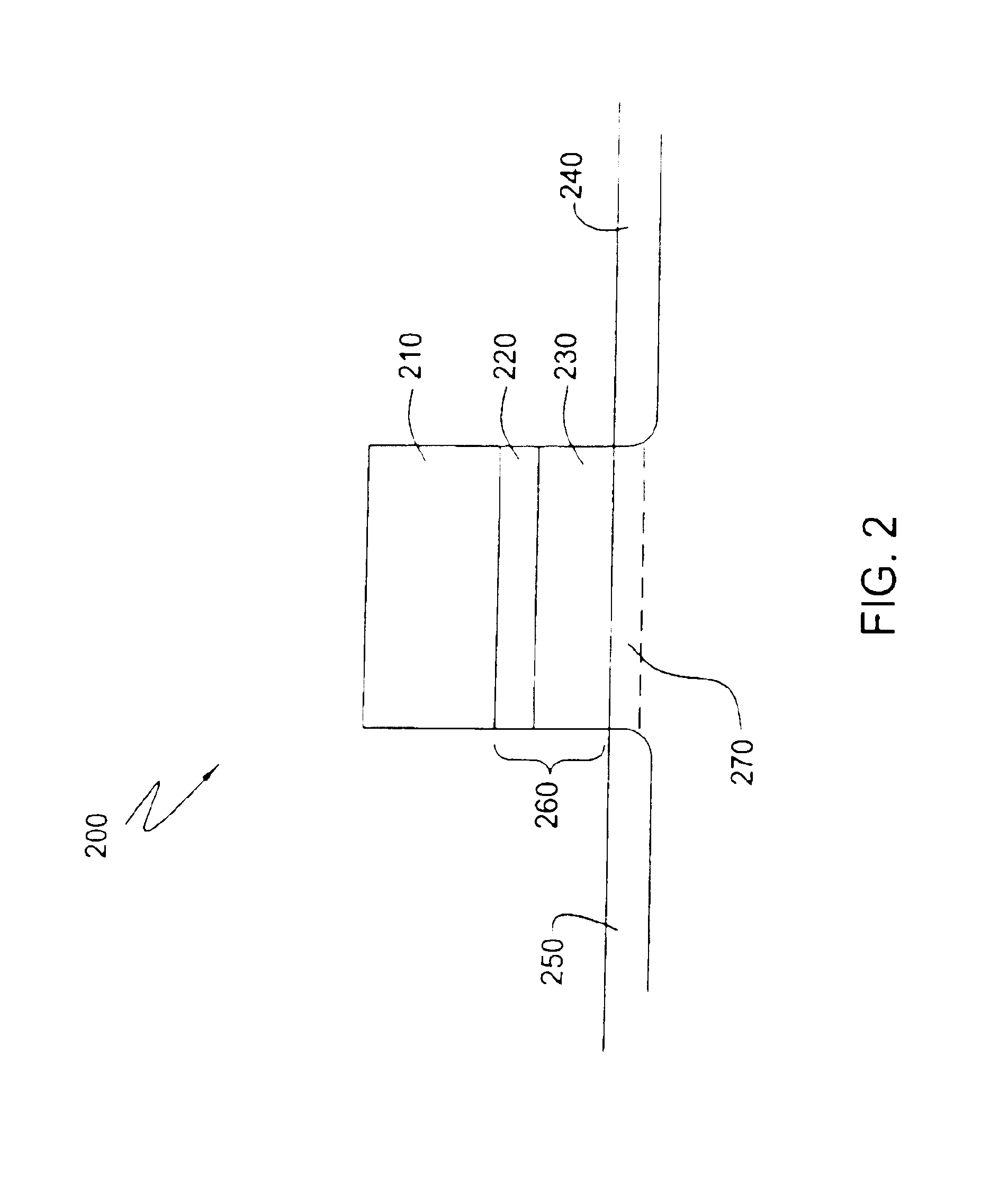System and method for forming a gate dielectric
a gate dielectric and dielectric technology, applied in the field of field effect transistors, can solve the problems of slow gate area shrinkage, difficulty in maintaining gate capacitance, and difficulty in forming silicon dioxide as a dielectric gate material
- Summary
- Abstract
- Description
- Claims
- Application Information
AI Technical Summary
Benefits of technology
Problems solved by technology
Method used
Image
Examples
example 1
FIG. 3 illustrates the processing steps used in accordance with the invention to form a hafnium oxide, hafnium silicate, or combination thereof gate dielectric stack having an EOT of about 1.12 nanometers. At step 310, an HF-last surface is formed on a semiconductor wafer by introducing a dilute hydrofluoric acid solution onto the wafer surface for a specified time period. In one embodiment, the wafer is immersed in a hydrofluoric acid bath for a time period of about 2 minutes to about 15 minutes. More preferably, the wafer is immersed in a 2% hydrofluoric acid bath for about 2 minutes.
Next, the wafer is placed in a thermal chamber for pre-treating at 1 to 100 torr. A step 320, NH3 is introduced onto the HF-last surface for a specified time period and at a specified temperature. Step 320 adds a nitride “coating” or “layer” that aids in preventing the dopant of the gate layer (210 in FIG. 2) from diffusing into the channel (270 in FIG. 2). Preferably, the specified time period is in ...
example 2
FIG. 8 illustrates the processing steps used in accordance with the invention to form a hafnium oxide and hafnium silicate gate dielectric stack having a peak mobility of about 400 cm2 / Vs. At step 810, an HF-last surface is formed on a semiconductor wafer by introducing a dilute hydrofluoric acid solution onto the wafer surface for a specified time period. In one embodiment, the wafer is immersed in a hydrofluoric acid bath for a time period of about 1 minute to about 15 minutes. More preferably, the wafer is immersed in a 2% hydrofluoric acid bath for about 2 minutes.
Next, at step 820, the HF-last surface is exposed to ozonated water by, for example, immersing the wafer in an ozonated water bath. Preferably, the ozone concentration in the ozonated water is in the range of about 10 ppm to about 30 ppm. Preferably, the ozone concentration in the water is about 20 ppm. Preferably, the HF-last surface is exposed to the ozonated water for about 5 minutes to about 15 minutes. More prefer...
PUM
| Property | Measurement | Unit |
|---|---|---|
| temperature | aaaaa | aaaaa |
| pressure | aaaaa | aaaaa |
| pressure | aaaaa | aaaaa |
Abstract
Description
Claims
Application Information
 Login to View More
Login to View More - R&D
- Intellectual Property
- Life Sciences
- Materials
- Tech Scout
- Unparalleled Data Quality
- Higher Quality Content
- 60% Fewer Hallucinations
Browse by: Latest US Patents, China's latest patents, Technical Efficacy Thesaurus, Application Domain, Technology Topic, Popular Technical Reports.
© 2025 PatSnap. All rights reserved.Legal|Privacy policy|Modern Slavery Act Transparency Statement|Sitemap|About US| Contact US: help@patsnap.com



